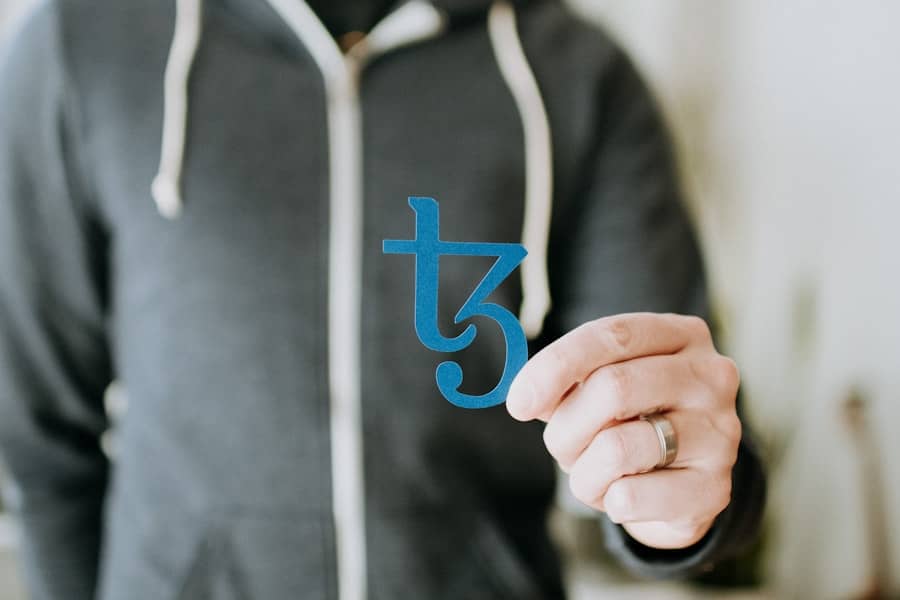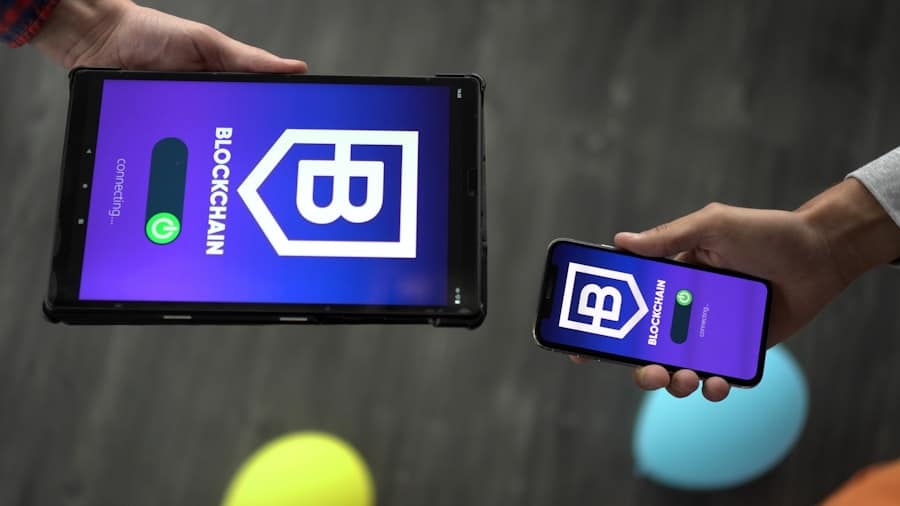Blockchain technology is a decentralized digital ledger system that records transactions across multiple computers in such a way that the registered transactions cannot be altered retroactively. This technology operates on a peer-to-peer network, ensuring that all participants have access to the same information, which enhances transparency and security. Each block in the chain contains a number of transactions, and once a block is filled, it is added to the chain in a linear, chronological order.
This structure not only makes it difficult for any single entity to manipulate the data but also provides a clear audit trail for all transactions. The implications of blockchain extend far beyond cryptocurrencies like Bitcoin.
In the gaming sector, blockchain can revolutionize how players interact with digital assets, allowing for true ownership of in-game items and currencies. This shift could lead to a more equitable gaming environment where players can trade or sell their assets freely, without the constraints imposed by traditional game developers. As the gaming industry continues to evolve, understanding the foundational principles of blockchain will be crucial for developers and players alike.
Key Takeaways
- Blockchain technology is a decentralized, secure, and transparent system for recording transactions.
- Augmented reality games are on the rise, blending virtual and real-world experiences for players.
- Secure in-game purchases face challenges such as fraud, data breaches, and lack of transparency.
- Blockchain ensures secure transactions in AR games by providing a tamper-proof and transparent ledger.
- Using blockchain for AR game purchases offers benefits such as enhanced security, transparency, and reduced fraud.
The Rise of Augmented Reality Games
Augmented reality (AR) games have surged in popularity over the past few years, driven by advancements in mobile technology and the widespread availability of smartphones equipped with powerful cameras and sensors. Unlike virtual reality (VR), which immerses players in a completely digital environment, AR overlays digital elements onto the real world, creating an interactive experience that blends both realms. This unique approach has captivated millions of players globally, as seen with the phenomenal success of games like Pokémon GO, which encourages users to explore their surroundings while capturing virtual creatures.
The rise of AR games can also be attributed to their ability to foster social interaction and community engagement. Many AR games are designed to be played in groups, encouraging players to collaborate or compete with one another in real-world locations. This social aspect not only enhances the gaming experience but also promotes physical activity, as players often need to walk or travel to specific locations to progress in the game.
As developers continue to innovate within this space, the potential for AR gaming to integrate with other technologies, such as blockchain, presents exciting opportunities for both gameplay and economic models.
Challenges of Secure In-Game Purchases
Despite the growing popularity of AR games, one significant challenge remains: ensuring secure in-game purchases. Players often invest real money into virtual items, skins, or enhancements that can significantly impact their gaming experience. However, the centralized nature of many gaming platforms raises concerns about fraud, hacking, and unauthorized transactions.
Instances of account theft or unauthorized access can lead to significant financial losses for players and erode trust in the gaming ecosystem. Moreover, traditional payment systems used in gaming often involve intermediaries that can introduce additional fees and delays. Players may find themselves frustrated by slow transaction times or unexpected charges when making purchases.
The lack of transparency in these transactions can further exacerbate concerns about security and fairness. As AR games continue to evolve and attract larger audiences, addressing these challenges will be critical for maintaining player confidence and ensuring a seamless gaming experience.
How Blockchain Ensures Secure Transactions
Blockchain technology offers a robust solution to the challenges associated with secure in-game purchases. By utilizing a decentralized ledger system, blockchain ensures that all transactions are recorded transparently and immutably. Each transaction is verified by multiple nodes within the network before being added to the blockchain, significantly reducing the risk of fraud or unauthorized access.
This verification process creates a trustless environment where players can engage in transactions without needing to rely on a central authority. Additionally, blockchain enables players to have true ownership of their digital assets. In traditional gaming environments, items purchased are often tied to a player’s account on a specific platform, meaning they cannot be transferred or sold outside that ecosystem.
With blockchain, assets can be tokenized as non-fungible tokens (NFTs), allowing players to buy, sell, or trade their items freely on various marketplaces. This not only enhances the value of in-game purchases but also empowers players by giving them control over their investments.
Benefits of Using Blockchain for AR Game Purchases
Integrating blockchain into AR games presents numerous benefits that can enhance both player experience and developer opportunities. One of the most significant advantages is the ability to create a secure and transparent marketplace for in-game assets. Players can confidently engage in transactions knowing that their purchases are protected by blockchain’s inherent security features.
This transparency fosters trust among players and developers alike, as all transactions are publicly verifiable. Moreover, blockchain facilitates cross-platform compatibility for digital assets. Players can use their NFTs across different games or platforms, creating a more interconnected gaming ecosystem.
This interoperability not only increases the utility of in-game purchases but also encourages developers to create innovative experiences that leverage shared assets. Additionally, by reducing reliance on traditional payment systems and intermediaries, blockchain can lower transaction fees and streamline the purchasing process for players.
The Future of Blockchain and AR Gaming
The future of blockchain technology in AR gaming is poised for significant growth as both industries continue to evolve. As more developers recognize the potential benefits of integrating blockchain into their games, we can expect an influx of innovative titles that leverage this technology for enhanced gameplay experiences. The combination of AR’s immersive capabilities with blockchain’s secure transaction framework could lead to entirely new genres of games that prioritize player agency and ownership.
Furthermore, as consumer awareness of blockchain technology increases, players may begin to demand more transparency and security from game developers. This shift could drive a broader adoption of blockchain solutions across the gaming industry, leading to a more equitable landscape where players have greater control over their digital assets. The convergence of AR and blockchain could also pave the way for new business models that prioritize player engagement and community building over traditional monetization strategies.
Integrating Blockchain into AR Game Platforms
Integrating blockchain into AR game platforms requires careful consideration of both technical and user experience aspects. Developers must ensure that the implementation does not detract from the immersive nature of AR gameplay. This may involve creating user-friendly interfaces that simplify interactions with blockchain features while maintaining seamless gameplay mechanics.
For instance, incorporating wallet functionalities directly into the game interface can allow players to manage their assets without disrupting their experience. Additionally, developers must address scalability concerns associated with blockchain technology. As AR games often require real-time interactions and quick response times, ensuring that blockchain transactions can keep pace with gameplay is crucial.
Solutions such as layer-2 scaling or sidechains may be necessary to facilitate fast and cost-effective transactions without compromising security or decentralization.
Consumer Trust and Confidence in AR Game Purchases
Building consumer trust and confidence in AR game purchases is essential for fostering a sustainable gaming ecosystem. As players become more aware of the potential risks associated with in-game transactions, developers must prioritize transparency and security measures to alleviate concerns. Clear communication regarding how blockchain technology protects player investments can help demystify its benefits and encourage adoption.
Moreover, establishing community-driven initiatives can further enhance trust among players. Engaging with users through forums or social media platforms allows developers to gather feedback and address concerns directly. By fostering an open dialogue about security practices and transaction processes, developers can create a sense of community ownership over the game’s economy.
This collaborative approach not only builds trust but also empowers players to take an active role in shaping their gaming experiences. In conclusion, as augmented reality games continue to gain traction within the gaming industry, integrating blockchain technology presents an opportunity to address existing challenges related to secure in-game purchases while enhancing player experiences through true ownership of digital assets. The future holds immense potential for innovation at this intersection, paving the way for a more transparent and equitable gaming landscape where players can confidently engage with their favorite titles.




